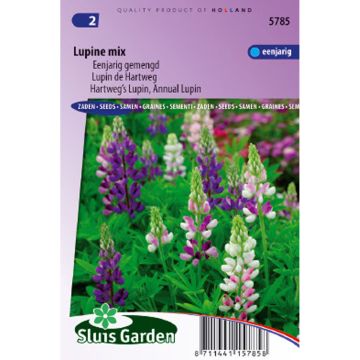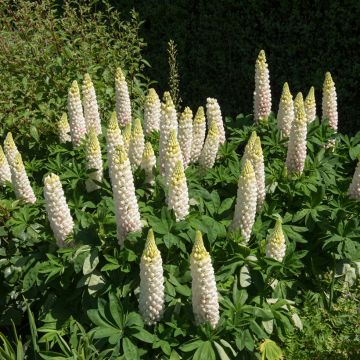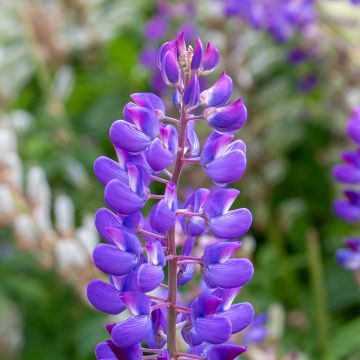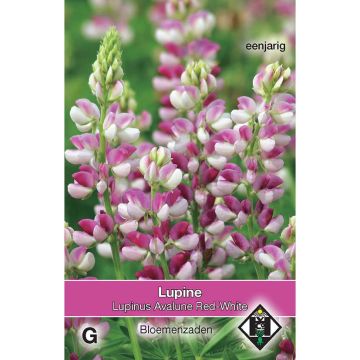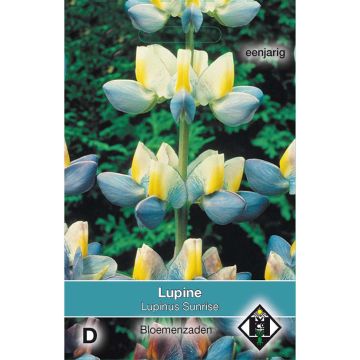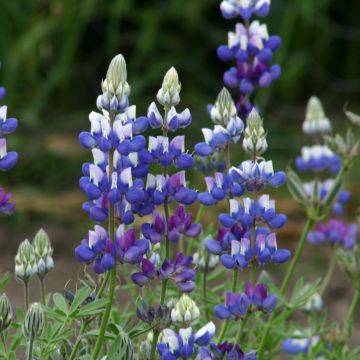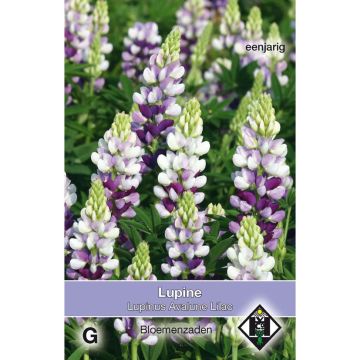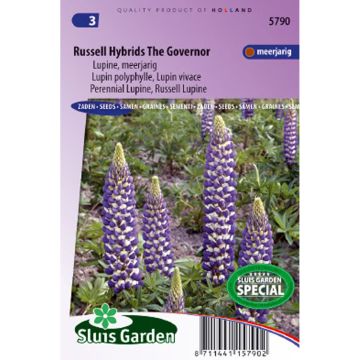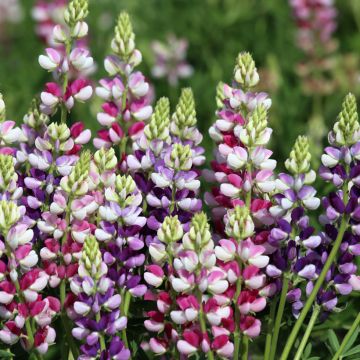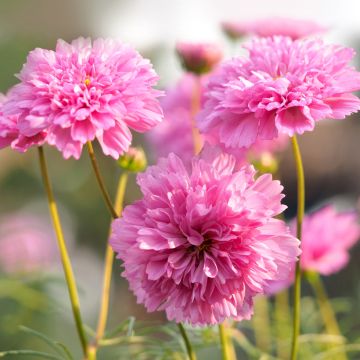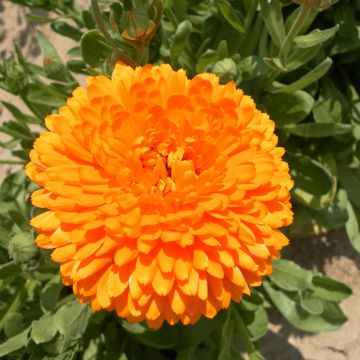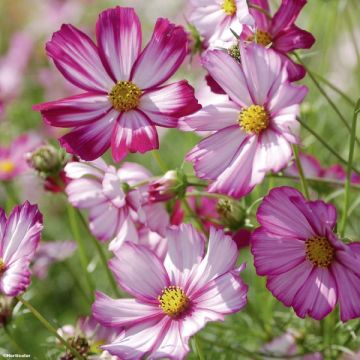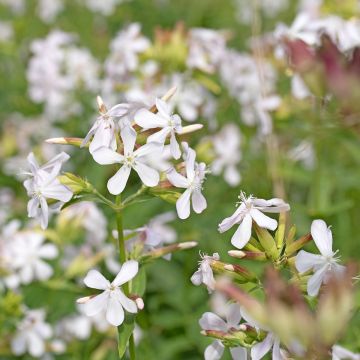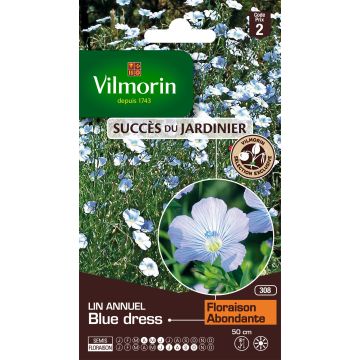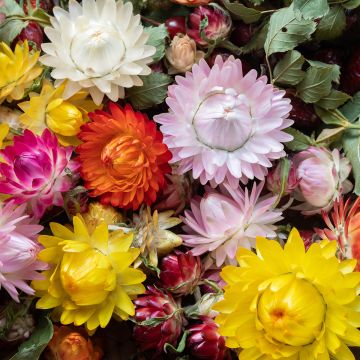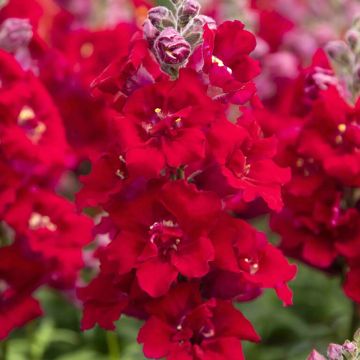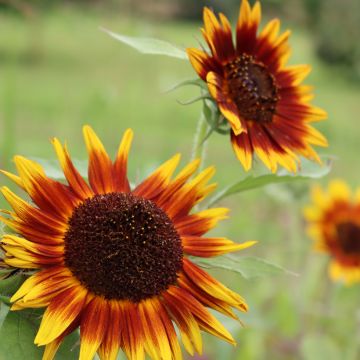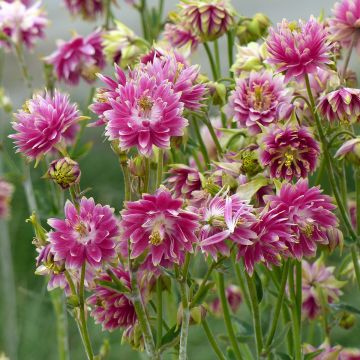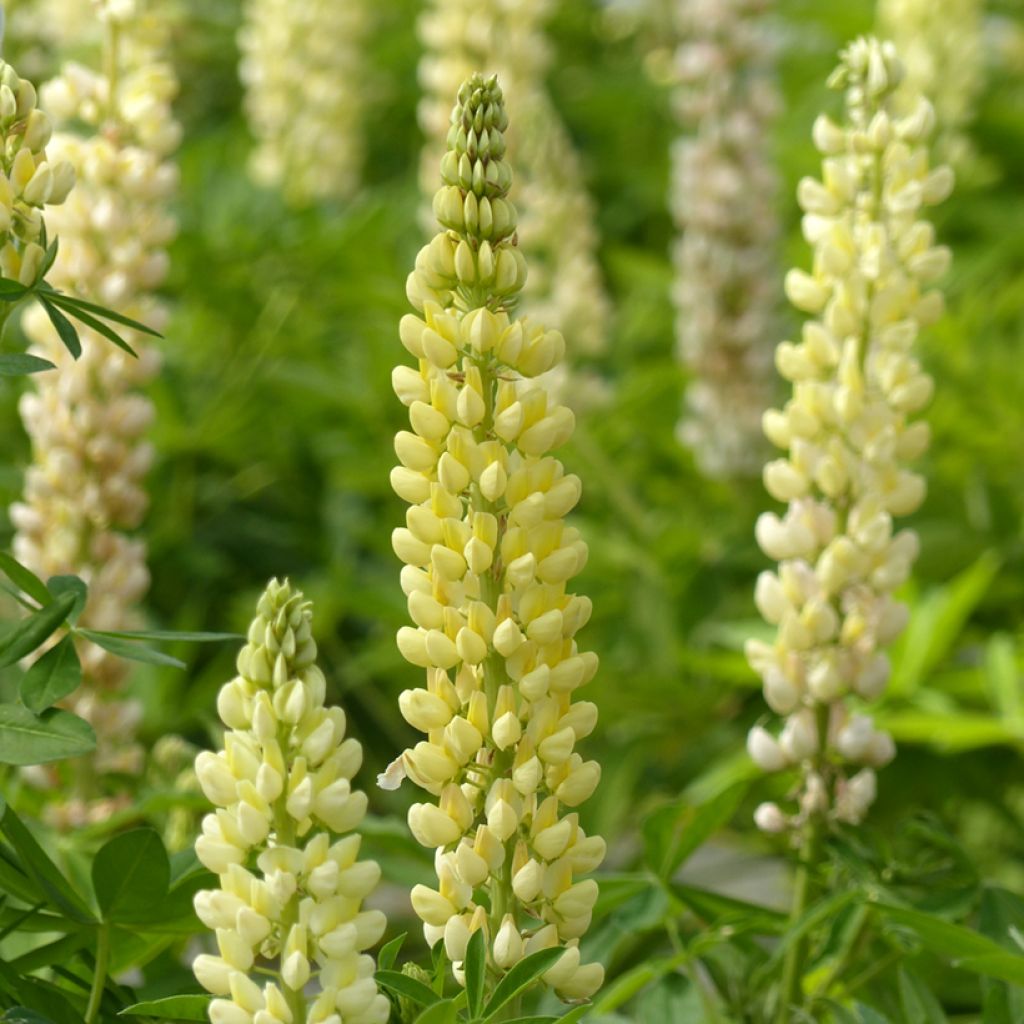

Lupinus Chandelier - seeds
Lupinus Chandelier - seeds
Lupinus polyphyllus Chandelier jaune
Lupin, Garden Lupin
This item cannot be shipped to the selected country
Dispatch by letter from €3.90
Delivery to Corse prohibited
More information
Schedule delivery date,
and select date in basket
This plant carries a 6 months recovery warranty
More information
We guarantee the quality of our plants for a full growing cycle, and will replace at our expense any plant that fails to recover under normal climatic and planting conditions.
Seed-only orders are dispatched by sealed envelope. The delivery charge for seed-only orders is €3.90.
Delivery to Corse prohibited: UE law prohibits the import of this plant from mainland France to Corse as part of the fight against Xylella fastidiosa. Please accept our sincere apologies.
More information
Does this plant fit my garden?
Set up your Plantfit profile →
Description
The 'Chandelier' lupin brightens up your flowerbeds, borders, and containers with its large spikes of yellow flowers that bloom in early summer. They are also excellent cut flowers. This perennial plant forms an opulent clump and its beautiful green leaves are deeply divided. Easy to grow and hardy, lupins thrive in any well-drained, non-calcareous garden soil in full sun. Sow in place between April and June.
The 'Chandelier' variety is part of the Russell lupine range, which are hybrids obtained by cross-breeding Lupinus polyphyllus, a perennial plant native to North America, and Lupinus hartwegii, an annual Mexican species. Some varieties were selected in the 1930s by a gardener named George Russell, a passionate Lupin enthusiast who gave his name to the range. Belonging to the Fabaceae family, these herbaceous perennial plants are appreciated for their robustness, floribundity, and ease of cultivation. 'Chandelier', a yellow-flowering cultivar, forms a bushy clump 90 cm tall when in flower and 60 to 75 cm wide. In June-July, it is covered with upright clusters of flowers, sometimes reaching a length of 50 cm. These spikes are densely filled with pea-like, 1 to 3 cm, butter-yellow, slightly fragrant flowers. The leaves are palmate, with a minimum of 5 leaflets radiating from the same petiole.
In the garden, the 'Chandelier' lupine is an essential plant for English and natural gardens. Its yellow flowering illuminates any flowerbed or container. It pairs particularly well with blue flowers, such as those of Geranium vivace Orion and Delphinium belladonna Ballkleid. If you prefer warm colours, consider Achillea Paprika with its red-orange flowers and Iris germanica Skyfire with its orange flowers.
Report an error about the product description
Flowering
Foliage
Plant habit
Safety measures
Botanical data
Lupinus
polyphyllus
Chandelier jaune
Fabaceae
Lupin, Garden Lupin
Lupinus 'Kronleuchter'
Cultivar or hybrid
ingestion
Cette plante est toxique si elle est ingérée volontairement ou involontairement.
Ne la plantez pas là où de jeunes enfants peuvent évoluer, et lavez-vous les mains après l'avoir manipulée.
Pensez à conserver l'étiquette de la plante, à la photographier ou à noter son nom, afin de faciliter le travail des professionnels de santé.
Davantage d'informations sur https://plantes-risque.info
Other Lupin seeds
Planting and care
Sow your Chandelier lupins in groups of 3 to 5 seeds directly in place from April to June. With their taproot, they do not tolerate transplanting well. Place them on well-worked and loosened soil, enriched with potting soil or compost, and cover them with 5 mm of substrate. The ideal temperature for germination should be between 16 and 20°C, and it usually takes 18 to 25 days. Thin out your seedlings, keeping only the strongest plant per group, and leave a distance of 30 to 40 cm between each plant. Beware of slugs, as they enjoy their young leaves. Flowering will only occur the following year. You can also sow in September-October.
Easy to grow lupins thrive in full sun or with light shade. Any good, well-drained, non-calcareous garden soil will suit them. They appreciate a rich, moist, well-drained, and neutral to acidic soil. Renew your perennial Lupins every 3 or 4 years.
Remove faded flowers to prolong flowering and prevent the seeds from self-sowing. Cut back the yellowed stems and leaves to ground level in autumn and provide a mulch of dead leaves or straw during winter.
Sowing period
Intended location
This item has not been reviewed yet - be the first to leave a review about it.
Flower seeds
Haven't found what you were looking for?
Hardiness is the lowest winter temperature a plant can endure without suffering serious damage or even dying. However, hardiness is affected by location (a sheltered area, such as a patio), protection (winter cover) and soil type (hardiness is improved by well-drained soil).

Photo Sharing Terms & Conditions
In order to encourage gardeners to interact and share their experiences, Promesse de fleurs offers various media enabling content to be uploaded onto its Site - in particular via the ‘Photo sharing’ module.
The User agrees to refrain from:
- Posting any content that is illegal, prejudicial, insulting, racist, inciteful to hatred, revisionist, contrary to public decency, that infringes on privacy or on the privacy rights of third parties, in particular the publicity rights of persons and goods, intellectual property rights, or the right to privacy.
- Submitting content on behalf of a third party;
- Impersonate the identity of a third party and/or publish any personal information about a third party;
In general, the User undertakes to refrain from any unethical behaviour.
All Content (in particular text, comments, files, images, photos, videos, creative works, etc.), which may be subject to property or intellectual property rights, image or other private rights, shall remain the property of the User, subject to the limited rights granted by the terms of the licence granted by Promesse de fleurs as stated below. Users are at liberty to publish or not to publish such Content on the Site, notably via the ‘Photo Sharing’ facility, and accept that this Content shall be made public and freely accessible, notably on the Internet.
Users further acknowledge, undertake to have ,and guarantee that they hold all necessary rights and permissions to publish such material on the Site, in particular with regard to the legislation in force pertaining to any privacy, property, intellectual property, image, or contractual rights, or rights of any other nature. By publishing such Content on the Site, Users acknowledge accepting full liability as publishers of the Content within the meaning of the law, and grant Promesse de fleurs, free of charge, an inclusive, worldwide licence for the said Content for the entire duration of its publication, including all reproduction, representation, up/downloading, displaying, performing, transmission, and storage rights.
Users also grant permission for their name to be linked to the Content and accept that this link may not always be made available.
By engaging in posting material, Users consent to their Content becoming automatically accessible on the Internet, in particular on other sites and/or blogs and/or web pages of the Promesse de fleurs site, including in particular social pages and the Promesse de fleurs catalogue.
Users may secure the removal of entrusted content free of charge by issuing a simple request via our contact form.
The flowering period indicated on our website applies to countries and regions located in USDA zone 8 (France, the United Kingdom, Ireland, the Netherlands, etc.)
It will vary according to where you live:
- In zones 9 to 10 (Italy, Spain, Greece, etc.), flowering will occur about 2 to 4 weeks earlier.
- In zones 6 to 7 (Germany, Poland, Slovenia, and lower mountainous regions), flowering will be delayed by 2 to 3 weeks.
- In zone 5 (Central Europe, Scandinavia), blooming will be delayed by 3 to 5 weeks.
In temperate climates, pruning of spring-flowering shrubs (forsythia, spireas, etc.) should be done just after flowering.
Pruning of summer-flowering shrubs (Indian Lilac, Perovskia, etc.) can be done in winter or spring.
In cold regions as well as with frost-sensitive plants, avoid pruning too early when severe frosts may still occur.
The planting period indicated on our website applies to countries and regions located in USDA zone 8 (France, United Kingdom, Ireland, Netherlands).
It will vary according to where you live:
- In Mediterranean zones (Marseille, Madrid, Milan, etc.), autumn and winter are the best planting periods.
- In continental zones (Strasbourg, Munich, Vienna, etc.), delay planting by 2 to 3 weeks in spring and bring it forward by 2 to 4 weeks in autumn.
- In mountainous regions (the Alps, Pyrenees, Carpathians, etc.), it is best to plant in late spring (May-June) or late summer (August-September).
The harvesting period indicated on our website applies to countries and regions in USDA zone 8 (France, England, Ireland, the Netherlands).
In colder areas (Scandinavia, Poland, Austria...) fruit and vegetable harvests are likely to be delayed by 3-4 weeks.
In warmer areas (Italy, Spain, Greece, etc.), harvesting will probably take place earlier, depending on weather conditions.
The sowing periods indicated on our website apply to countries and regions within USDA Zone 8 (France, UK, Ireland, Netherlands).
In colder areas (Scandinavia, Poland, Austria...), delay any outdoor sowing by 3-4 weeks, or sow under glass.
In warmer climes (Italy, Spain, Greece, etc.), bring outdoor sowing forward by a few weeks.

































